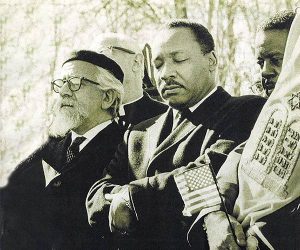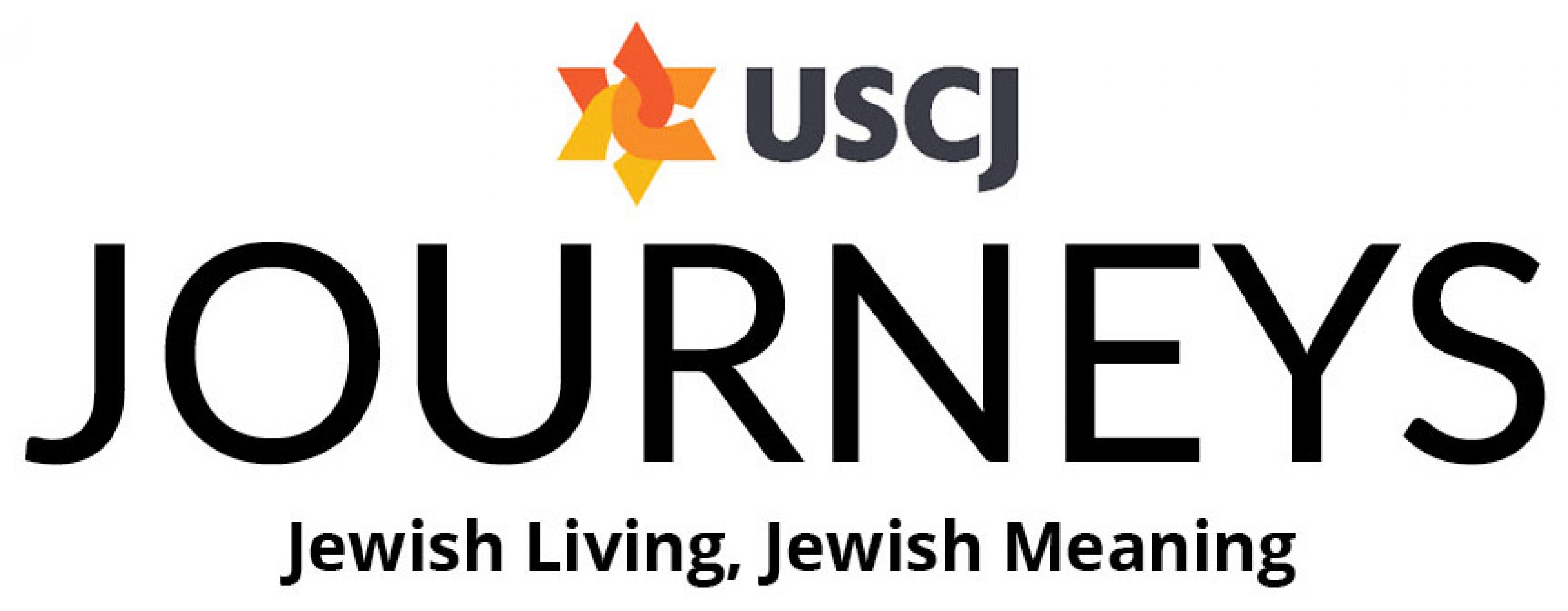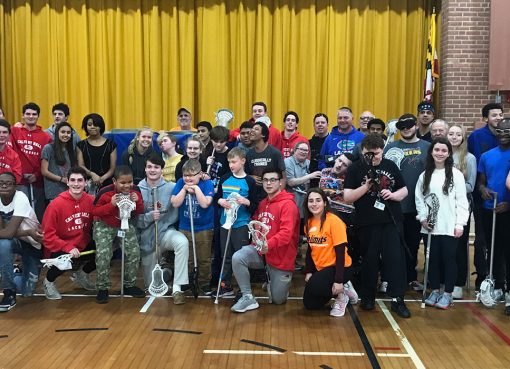Dr. Martin Luther King, Jr. and Rabbi Abraham Joshua Heschel’s Legacy Continues to Inspire
Dr. Martin Luther King, Jr. and Rabbi Abraham Joshua Heschel appear alongside one another in some of the most iconic photographs of the 1960s American civil rights movement. They are together, arm in arm, crossing the Edmund Pettus Bridge in Selma, Alabama, in 1965, and together again standing outside the Arlington Cemetery in Virginia in 1968 in silent protest of the Vietnam War.

Photograph by John C. Goodwin
People often forget, or don’t know, how unusual a friendship this was at the time. Dr. King was a Baptist minister from the segregated South of Atlanta, Georgia, who trained at Boston University. Heschel was born into a Hasidic rabbi’s family in Poland and trained as a scholar in Germany before emigrating to the United States in 1940. Still, they forged a genuine friendship based on their spiritual grounding and understanding that religion is the base on which to build a movement to end injustice and cruelty.
In an article written by Dr. Susannah Heschel, daughter of Heschel and professor of Jewish Studies at Dartmouth University, for Plough magazine, she recalls her father’s conviction of “racism is Satanism” that launched him into the American civil rights movement of which American Jews were no doubt disproportionally involved.
In another article Susannah wrote for Jewish Week about her father’s relationship with Dr. King, she said, “What brought them together was a piety that transcended differences, forged by their love of the Bible, especially the prophets. Their friendship was stoked by mutual concerns and tremendous public courage.” She recalls her father speaking passionately against racism, and engaging African-American theologians and social thinkers in dialogue and listening to their experiences. He worked together with not only Dr. King, but also with Jesse Jackson, Albert Cleague, Andrew Young and others. Meanwhile, Dr. King, through his friendship with Heschel, spoke out passionately on behalf of Soviet Jews, in support of the State of Israel and against the war in Vietnam.
“For both men, these were biblically based positions, and the similarities in their understandings of the Bible are striking,” wrote Susannah. “Both believed that God is affected by human deeds, and both rejected Aristotle’s influential insistence that God is unaffected by human beings—an ‘unmoved Mover.’ On the contrary, God is ‘the most moved Mover,’ both men used to say. That is the lesson of the prophets: that God cares deeply about human beings and is pained by human acts of injustice and cruelty.”
Dr. John Ruskay, executive vice president emeritus of UJA Federation of New York, who served for eight years as JTS vice chancellor, had the powerful experience of meeting and working with both prophets during different times in his life. In 1968-‘69, while Dr. Ruskay was in rabbinical school at the Jewish Theological Seminary of America (JTS), students were required to work off their scholarships and he did so by serving as Heschel’s assistant for a year at JTS, where Heschel was on the faculty for over a quarter of a century.
Several years earlier, in March 1965, Dr. Ruskay, whose family had ingrained in him a passion for civil rights, was a college student at the University of Pittsburgh and responded to a call from the Student Non Violent Coordinating Committee (SNCC). SNCC had called on supporters near and far to travel to Alabama’s capital in Montgomery and demand that permits be provided for the march from Selma to Montgomery. Dr. Ruskay and several other student leaders led a delegation of 100 students to work with Dr. King and his colleagues for a week to continue their peaceful protests.
“The first night we marched to the state capital and sat on the sidewalk listening on radios to President Johnson deliver his famous ‘We Shall Overcome’ speech to Congress,” Dr. Ruskay recalls.
“The next day, we were staying in the African-American community in Montgomery,” he shares. “We marched to the state capital and I happened to be in the front next to the then-young John Lewis, who later became Congressman Lewis. We were stopped by the police and told to disband. When we didn’t, a posse of police riding on horses armed with whips and bats charged into us. It was bloody. We retreated to the churches in the African American community. Later that day, Dr. King, with his senior colleagues—Reverend Andrew Young and Minister Ralph Abernathy—rushed to Montgomery.”
“In the days that followed, every night, the community gathered and rallied; and King, Young and Abernathy would address the packed audiences,” he continues. “I will never forget the singing, the praying and the preaching in the churches—it was inspiring.”
In the evening, while back at the hotel, Dr. Ruskay was also one of two student leaders invited to meet with Dr. King, Reverend Young and prominent African American civil rights leader James Forman. He did this for several nights to help discuss and plan the marches and rallies. “We would march near the schools, and students would come out and join the demonstrations,” says John. “It was very powerful. I remember walking Dr. King to his hotel after one of the meetings.”
Among Dr. Ruskay’s memories, two stand out: First, how incredible it was to be in the church with Dr. King preaching. “The singing, spirit and cadence of Southern preaching were mind-blowing,” he shares. Secondly, Dr. King’s calm and presence in those meetings and when walking alongside him. “I was so taken by that—his calm and bearing,” he says. “It filled the room and was very powerful in providing a sense of confidence for others to move forward.”
While much time has passed and progress has been made since Dr. King and Heschel stood together on the front lines of the civil rights movement, much opportunity remains today. For Dr. Ruskay, he finds hope for the future in Jewish tradition. “In Jewish life and tradition, we believe everyone is created in the image of God and that is a deep part of who we are. We relate to every person with respect and to provide dignity for all people. That is deep in our tradition, and in many religious traditions, and that’s certainly why the commitment to care for our own community and beyond is so important.”
The Connection Continues
There is another connection between Dr. King and Heschel. Dr. King was assassinated on April 4, 1968 when he was just 39; the national holiday that marks his birth on January 15, 1929, is on the third Monday in January. Heschel was born on January 11, 1907, and died on December 23, 1972, at 65. His yarzheit often falls in early to mid-January, right around MLK Day. Synagogues around the country often mark the days and remember the two men together.
Their Legacy Lives On
Discover how the bond Dr. King and Heschel shared has been passed down to the next generation—to their daughters, who have formed a similar friendship, in this article.







